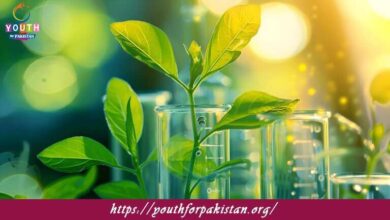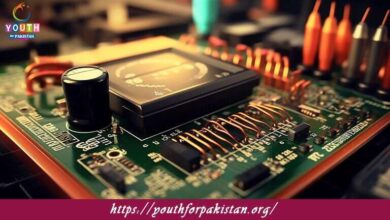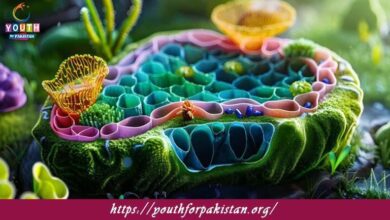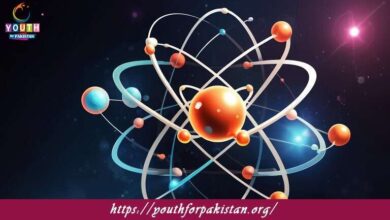10th Class Biology Chapter 10 MCQs with Answers
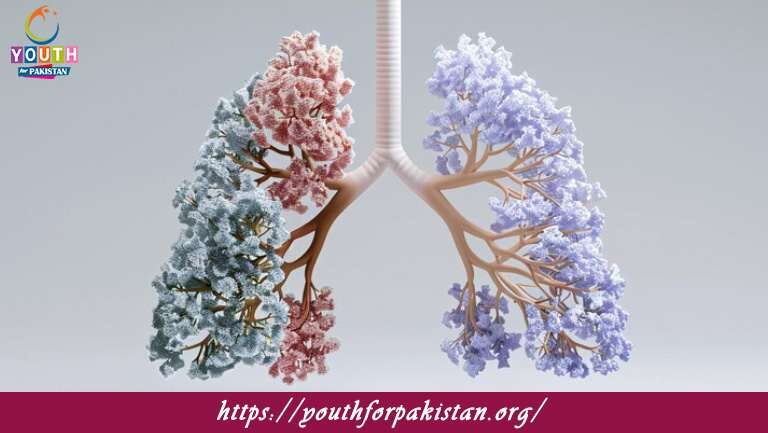
Discover the fundamentals of gaseous exchange with these comprehensive 10th Class Biology MCQs. Covering topics like oxygen and carbon dioxide transport, respiratory systems, and adaptations for efficient exchange, these questions are ideal for mastering the concept. Prepare effectively for your exams with trending keywords like “biology MCQs for competitive exams” and “respiratory system quiz questions.” Perfect for quick revision and in-depth understanding.
During gaseous exchange, oxygen is taken in by organisms, and which gas is released as a waste product?
a) Nitrogen
b) Hydrogen
c) Carbon dioxide
d) Oxygen
In humans, gaseous exchange occurs in which structure of the respiratory system?
a) Larynx
b) Bronchi
c) Alveoli
d) Trachea
What is the process by which oxygen is transported from the lungs to body tissues?
a) Osmosis
b) Diffusion
c) Transpiration
d) Respiration
The respiratory surface in insects is called:
a) Lungs
b) Trachea
c) Spiracles
d) Alveoli
In which direction does the movement of gases occur during gaseous exchange in plants?
a) From the atmosphere into the leaves
b) From the roots into the atmosphere
c) From the leaves into the atmosphere
d) From the atmosphere into the roots
In humans, which gas is exchanged at the alveoli of the lungs?
a) Oxygen and nitrogen
b) Oxygen and carbon dioxide
c) Carbon dioxide and nitrogen
d) Carbon dioxide and water vapor
The movement of oxygen from the alveoli into the blood and carbon dioxide from the blood into the alveoli occurs by:
a) Osmosis
b) Diffusion
c) Active transport
d) Filtration
Which of the following is the correct order of organs involved in gaseous exchange in humans?
a) Trachea – Bronchi – Lungs – Alveoli
b) Bronchi – Trachea – Alveoli – Lungs
c) Lungs – Alveoli – Bronchi – Trachea
d) Trachea – Lungs – Alveoli – Bronchi
What is the role of hemoglobin in gaseous exchange?
a) Hemoglobin transports carbon dioxide from the lungs to body tissues.
b) Hemoglobin transports oxygen from the body tissues to the lungs.
c) Hemoglobin transports oxygen from the lungs to body tissues.
d) Hemoglobin transports carbon dioxide from the body tissues to the lungs.
Which of the following animals carries out gaseous exchange through the skin?
a) Fish
b) Frog
c) Bird
d) Elephant
The diffusion of gases in and out of the leaf of a plant occurs through small pores called:
a) Trachea
b) Alveoli
c) Stomata
d) Bronchi
In fish, gaseous exchange occurs through:
a) Tracheal tubes
b) Spiracles
c) Gills
d) Lungs
During inhalation in humans, the diaphragm:
a) Contracts and moves upward
b) Relaxes and moves upward
c) Contracts and moves downward
d) Relaxes and moves downward
The partial pressure of oxygen is higher in the alveoli of the lungs compared to:
a) The blood capillaries surrounding the alveoli
b) The atmosphere outside the body
c) The body tissues
d) The bronchi leading to the lungs
During exhalation in humans, the diaphragm:
a) Contracts and moves upward
b) Relaxes and moves upward
c) Contracts and moves downward
d) Relaxes and moves downward
The gaseous exchange in plants occurs through tiny pores present on the surface of leaves. What are these pores called?
a) Bronchi
b) Trachea
c) Stomata
d) Alveoli
In humans, which gas is carried by hemoglobin in red blood cells?
a) Carbon dioxide
b) Oxygen
c) Nitrogen
d) Hydrogen
The process of gaseous exchange in plants is also referred to as:
a) Photosynthesis
b) Respiration
c) Transpiration
d) Diffusion
During gaseous exchange in the lungs, the diffusion of gases occurs between the alveoli and the:
a) Capillaries
b) Trachea
c) Bronchi
d) Larynx
Gaseous exchange in plants takes place mainly through which part of the plant?
a) Stem
b) Roots
c) Flowers
d) Leaves
In humans, the process of inhalation is an active process that involves the contraction of which muscle?
a) Biceps
b) Quadriceps
c) Diaphragm
d) Hamstring
Which of the following is the correct sequence of events during inhalation?
a) Diaphragm contracts, chest cavity expands, air is drawn into the lungs
b) Diaphragm relaxes, chest cavity expands, air is drawn into the lungs
c) Diaphragm contracts, chest cavity contracts, air is drawn out of the lungs
d) Diaphragm relaxes, chest cavity contracts, air is drawn out of the lungs
The exchange of gases between the blood and body tissues occurs in which part of the circulatory system?
a) Arteries
b) Veins
c) Capillaries
d) Heart chambers
Which of the following organisms relies on their skin for gaseous exchange?
a) Fish
b) Birds
c) Insects
d) Reptiles
What is the function of surfactant in the alveoli of the lungs?
a) To increase the surface area of the alveoli
b) To prevent the collapse of the alveoli
c) To facilitate the diffusion of gases
d) To produce mucus for trapping dust particles
During gaseous exchange in plants, which gas is required for photosynthesis in the presence of sunlight?
a) Carbon dioxide
b) Oxygen
c) Nitrogen
d) Hydrogen
What is the primary gas exchanged during respiration in both plants and animals?
a) Oxygen
b) Carbon dioxide
c) Nitrogen
d) Hydrogen
In which of the following organisms does gaseous exchange occur through the skin?
a) Fish
b) Birds
c) Insects
d) Mammals
Which of the following gases is released during cellular respiration in living organisms?
a) Oxygen
b) Carbon dioxide
c) Nitrogen
d) Hydrogen
In humans, the exchange of gases between the blood and body tissues occurs due to the difference in the concentration of gases, which is known as:
a) Osmosis
b) Transpiration
c) Diffusion
d) Respiration
Gaseous exchange in the respiratory system is essential for which process in living organisms?
a) Digestion
b) Excretion
c) Respiration
d) Circulation
The respiratory surface in insects is a network of tubes called:
a) Lungs
b) Trachea
c) Alveoli
d) Bronchi
The oxygen transported in the blood is mainly bound to which molecule?
a) Hemoglobin
b) Myoglobin
c) Chlorophyll
d) Collagen
Which of the following organisms has specialized respiratory organs called gills for gaseous exchange?
a) Insects
b) Fish
c) Birds
d) Reptiles
In humans, the movement of gases during gaseous exchange is mainly driven by:
a) Active transport
b) Osmosis
c) Filtration
d) Diffusion
The exchange of gases between the respiratory system and the circulatory system occurs in the:
a) Lungs
b) Trachea
c) Bronchi
d) Alveoli
In humans, during exhalation, which of the following occurs?
a) The diaphragm contracts and moves upward.
b) The diaphragm relaxes and moves upward.
c) The diaphragm contracts and moves downward.
d) The diaphragm relaxes and moves downward.
Which of the following animals uses gills for gaseous exchange?
a) Frog
b) Bird
c) Earthworm
d) Fish
Which of the following structures is responsible for the filtration of air in the respiratory system of humans?
a) Trachea
b) Alveoli
c) Larynx
d) Nasal passages
The respiratory pigment that carries oxygen in the blood of humans is:
a) Chlorophyll
b) Myoglobin
c) Hemoglobin
d) Collagen
In plants, which gas is utilized during photosynthesis to produce glucose and oxygen?
a) Oxygen
b) Carbon dioxide
c) Nitrogen
d) Hydrogen
Which of the following organisms uses a specialized respiratory system known as lungs for gaseous exchange?
a) Insects
b) Fish
c) Birds
d) Reptiles
The exchange of gases in plants occurs through small openings called:
a) Trachea
b) Alveoli
c) Stomata
d) Bronchi
The process of breathing in and out in humans is also known as:
a) Osmosis
b) Transpiration
c) Respiration
d) Ventilation
In which of the following organisms does gaseous exchange occur through the skin?
a) Fish
b) Birds
c) Insects
d) Mammals
During exhalation in humans, the diaphragm:
a) Contracts and moves upward
b) Relaxes and moves upward
c) Contracts and moves downward
d) Relaxes and moves downward
The partial pressure of oxygen is higher in the alveoli of the lungs compared to:
a) The blood capillaries surrounding the alveoli
b) The atmosphere outside the body
c) The body tissues
d) The bronchi leading to the lungs
During inhalation in humans, the diaphragm:
a) Contracts and moves upward
b) Relaxes and moves upward
c) Contracts and moves downward
d) Relaxes and moves downward
Gaseous exchange in plants takes place mainly through which part of the plant?
a) Stem
b) Roots
c) Flowers
d) Leaves
What is the function of surfactant in the alveoli of the lungs?
a) To increase the surface area of the alveoli
b) To prevent the collapse of the alveoli
c) To facilitate the diffusion of gases
d) To produce mucus for trapping dust particles
In humans, the exchange of gases between the blood and body tissues occurs due to the difference in the concentration of gases, which is known as:
a) Osmosis
b) Transpiration
c) Diffusion
d) Respiration
Gaseous exchange in the respiratory system is essential for which process in living organisms?
a) Digestion
b) Excretion
c) Respiration
d) Circulation
The respiratory surface in insects is a network of tubes called:
a) Lungs
b) Trachea
c) Alveoli
d) Bronchi
The oxygen transported in the blood is mainly bound to which molecule?
a) Hemoglobin
b) Myoglobin
c) Chlorophyll
d) Collagen
Which of the following organisms has specialized respiratory organs called gills for gaseous exchange?
a) Insects
b) Fish
c) Birds
d) Reptiles
In humans, the movement of gases during gaseous exchange is mainly driven by:
a) Active transport
b) Osmosis
c) Filtration
d) Diffusion
The exchange of gases between the respiratory system and the circulatory system occurs in the:
a) Lungs
b) Trachea
c) Bronchi
d) Alveoli
In humans, during exhalation, which of the following occurs?
a) The diaphragm contracts and moves upward.
b) The diaphragm relaxes and moves upward.
c) The diaphragm contracts and moves downward.
d) The diaphragm relaxes and moves downward.
Which of the following animals uses gills for gaseous exchange?
a) Frog
b) Bird
c) Earthworm
d) Fish
Which of the following structures is responsible for the filtration of air in the respiratory system of humans?
a) Trachea
b) Alveoli
c) Larynx
d) Nasal passages
If you are interested to enhance your knowledge regarding Physics, Chemistry, Biology, and Computer please click on the link of each category, you will be redirected to dedicated website for each category.


